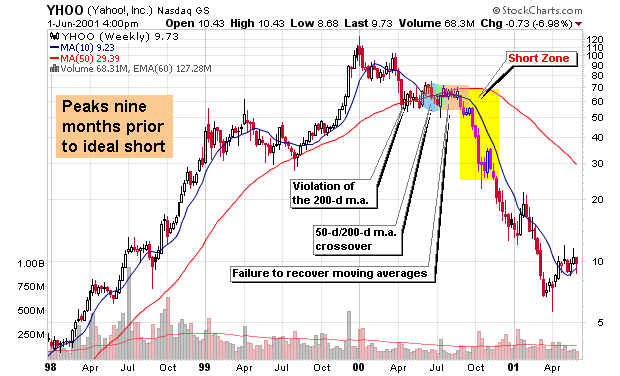OPTIONS IDEA A Roaring Alternative to Short Selling
Post on: 16 Апрель, 2015 No Comment

By: staff at Investopedia.com
When markets are tanking and a trader wants to speculate on lower prices, but doesnt anticipate a massive decline nor want to commit a lot of capital, the staff at Investopedia.com suggest an alternative to outright short selling or plain buying put options.
Two of the best features of options are that they afford an investor or trader the opportunity to achieve certain objectives and/or play the market in certain ways that they might not otherwise be able to. For example, if an investor is bearish on a particular stock or index, one of the choices is to sell short shares of the stock. While this is a perfectly viable investment alternative, it does have some negatives. First off, there are fairly sizable capital requirements. Secondly, there is technically unlimited risk, because there is no limit as to how far the stock could rise in price after the investor sold short the shares. Fortunately, options offer alternatives to this scenario.
The Put Option
One alternative to shorting a stock is to purchase a put option. which gives the buyer the option, but not the obligation, to sell short 100 shares of the underlying stock at a specific priceknown as the strike priceup until a specific date in the future (known as the expiration date). To purchase a put option, the investor pays a premium to the option seller. This is the entire amount of risk associated with this trade. The bottom line is that the buyer of a put option has limited risk and essentially an unlimited profit potential (profit potential is limited only by the fact that a stock can only go to zero). Nevertheless, despite these advantages, buying a put option is not always the best alternative for a bearish trader or investor who desires limited risk and minimal capital requirements.
Mechanics of the Bear Put Spread
One of the most common alternatives to buying a put option is a strategy known as a bear put spread. This strategy involves buying one put option with a higher strike price and simultaneously selling the same number of put options at a lower strike price. As an example, consider the possibility of buying a put option with a strike price of $50 on a stock trading at $51 a share.
Let’s assume that there are 60 days left until option expiration and that the price of the 50 strike price put option is $2.50. In order to purchase this option, a trader would pay a premium of $250. Then, for the next 60 days he or she would have the right to sell short 100 shares of the underlying stock at a price of $50 a share. So, if the price of the stock fell to $45, $40, $30 or even lower, the buyer of the put option could exercise his or her put option and sell short 100 shares at $50 a share. He or she could then buy back the shares at the current price and pocket the difference between $50 a share and the price he paid to buy back the shares.
The other, more common, alternative would be to sell the put option itself and pocket the profit. For example, if the stock fell to $40 a share, the buyer who bought the 50 put option at $2.50 would be able to sell the put option for $10 or more, resulting in a substantial profit.
NEXT PAGE: Pros & Cons of Bear Put Spread














